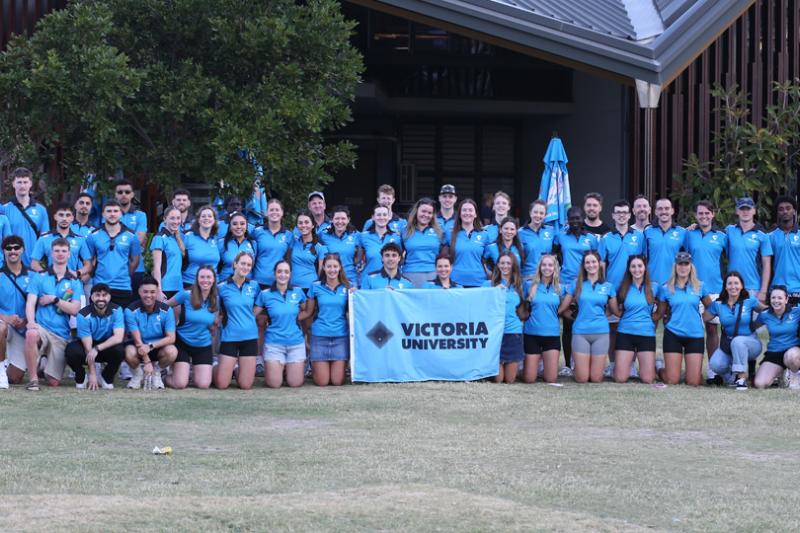Cycling in the west of Melbourne

In early February 2023, Angus Collins was killed while riding his bike in Melbourne. He and a truck driver collided at the intersection of Dock Link Road and Footscray Road.
In Australia, on average a person riding a bike is killed every nine days, nearly always in a collision with the driver of a motor vehicle. When considering the relatively small number of trips made by bicycle in Australia compared to motor vehicle trips, this represents a very high rate indeed, one of the worst in the world in high income countries.
There is an official investigation underway so we don’t know the full details of the collision. It’s possible in Angus’ case both he and the truck driver had green lights indicating they could both proceed through the intersection. Tragically, the design of the intersection, which has a large pylon just before the apex, provides a substantial blind spot for cars and trucks, making it difficult and in some cases impossible for them to see cyclists.
Is this inherently dangerous intersection an isolated case? Sadly no – it is the norm for most of Melbourne and in particular, the western suburbs to be dangerous for cyclists.
The west of Melbourne has traditionally been an industrial area with many truck movements and the roads have been designed in such a way to prioritise the speed and flow of trucks and cars. This inevitably leads to roads being more dangerous for people on bikes or walking.
This approach to road design, with an emphasis on speed and flow of motorised traffic, has been the accepted orthodoxy since the 1950s. It was only in the 1990s that a different way of thinking about road design was proposed. Unsurprisingly, this concept originated in Sweden[1].
This approach has come to be known as the Safe System approach. The starting point for the Safe System approach is that everyone, regardless of what mode of transport they choose, arrives alive.
To achieve this outcome, there are 4 guiding principles:
- Principle 1: Human Fallibility: People make mistakes which can lead to crashes
- Principle 2: Human vulnerability: The human body has a limited physical ability to tolerate crash forces
- Principle 3: Road safety is a shared responsibility amongst everyone, including those that design, build, operate and use the road system
- Principle 4: Build a safe and forgiving system. All parts of the road system must be strengthened in combination to multiply the protective effects and if one part fails, the others will still protect people.
The key differences between the traditional and Safe System approaches are summarised below:
| Traditional | Safe system | |
| What is the problem? | Accidents | Fatalities and serious injuries |
| What causes the problem? | Human factors | People make mistakes, people are fragile |
| Who is ultimately responsible? | Individual road users | System designers |
| What is the major planning approach? | Incremental approach to reduce the problem | Systematic approach to build a safe road system |
| What is the appropriate goal? | Optimum number of fatalities and serious injuries | Zero fatalities and serious injuries |
Taking a Safe System approach means designing roads that ensure in the event of a collision, human tolerances to injury are not exceeded and forces are managed.
This necessitates separating vehicles of incompatible speeds and masses, for example by separating extremely heavy trucks from light and vulnerable road users, such as cyclists and pedestrians. The key speed above which different vehicles should be separated is 30kmh, as above that speed the risk of death increases exponentially.
Some people reading this will think this is pie in the sky stuff that will never work, but it has. In 2021 Oslo achieved zero road fatalities down from a peak of 41 after a comprehensive program of interventions following Safe System principles.
In theory, road authorities have signed up to the Safe System approach in Victoria, but in practice, the Safe System continues to be ignored, especially for cyclists and pedestrians.
For example in the west of Melbourne there are no streets where the speed limit is 30kmh and it is common to find cyclists expected to travel on roads with trucks and cars travelling between 60 and 80kmh, protected by nothing more than a strip of white paint.
Kororoit Creek Road is a particularly notorious example. In the words of one Hobsons Bay City Council document, cyclists may find this “uncomfortable”. Terrifying is probably a better word.

All too often, road authorities in Melbourne and especially the west of Melbourne, fall back on the dreaded sharrow (shared lane marking) which the latest research shows is more dangerous than nothing at all.
Given that most conflict points and collisions occur at intersections, the Safe System approach has led to a conceptual design called Protected Intersection, which has four main features:
- a Corner Refuge Island
- a Forward Stop Bar for cyclists
- a Setback bike and pedestrian crossing with small radius corners to slow drivers and improve field of view
- Bicycle Friendly Signal phasing.
So, what would this mean for the intersection where Angus was killed? Trucks would need to take the corner more slowly and cyclists would be in the middle of the field of view, not in driver’s peripheral vision. This increases the likelihood drivers will see cyclists, have time to slow down and avoid a collision.
A better small radius corner painted on to the road already exists at the corner of Dock Link Rd and Footscray Rd, however this is ignored, with drivers always following the large radius and hence faster corner defined by the concrete kerb.
Collisions would also be avoidable if the signal phasing was set so that trucks and bikes would never be crossing paths at the same time, thereby following Principle 4 – with different parts of the system reinforcing one another in the event one part fails.
As has been shown all around the world countless times, when you make cycling safe for those who already cycle, a funny thing happens – more people start cycling.
More people cycling benefits everyone, even motorists, who benefit from reduced congestion as cycle lanes can accommodate five times as many people per square metre compared to car travel. The famously cycle friendly Netherlands is regularly voted among the best countries to drive.
A Footscray local and Monash University researcher, Lauren Pearson, published research recently that showed three in four people in Melbourne would ride regularly if it was safe to do so. This rises to 85 to 90 per cent in the Maribyrnong local government area.
There are so many other benefits from more people cycling including:
- improved public health
- better air quality
- reduced greenhouse gas emissions
- reduced transport poverty
- better productivity
- improved local revenue.
This has been described as a ‘Miracle Pill’.
Angus Collins was a well-loved young man with so much life ahead of him. The lives of the truck driver involved and their family have been altered forever as well.
It is possible to make cycling safe in the west of Melbourne so incidents like this aren’t repeated. We just need to make it a priority.
[1] Larsson, Peter, and Claes Tingvall. "The safe system approach–A road safety strategy based on human factors Principles." In Engineering Psychology and Cognitive Ergonomics. Applications and Services: 10th International Conference, EPCE 2013, Held as Part of HCI International 2013, Las Vegas, NV, USA, July 21-26, 2013, Proceedings, Part II 10, pp. 19-28. Springer Berlin Heidelberg, 2013.



